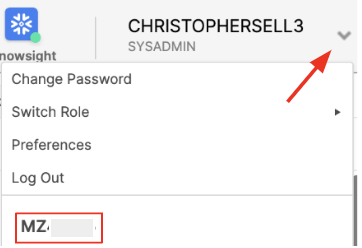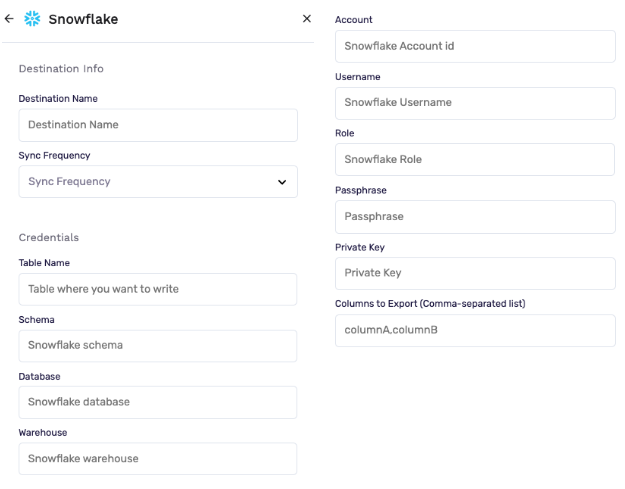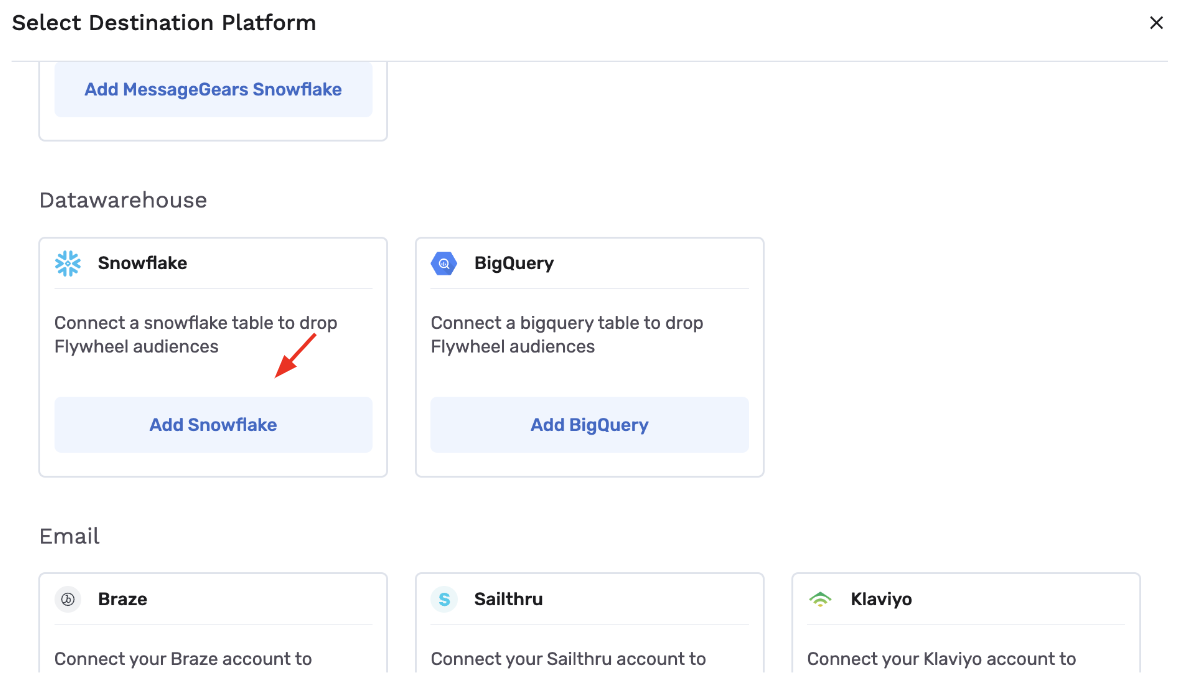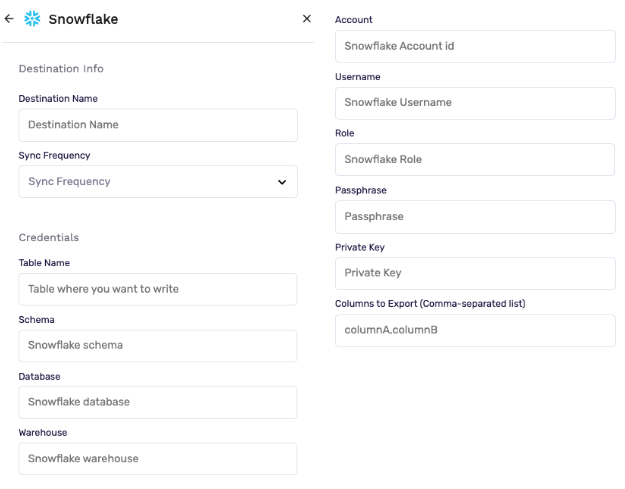Snowflake
This article outlines the steps necessary to set up Snowflake as a GrowthLoop destination and begin exporting audiences for activation.
Requirements
- Snowflake warehouse, database, schema, and table names
- Snowflake account ID
- Snowflake username, role, passphrase, and private key
If you already have these credentials on hand, you can skip down to Setting Snowflake as a Destination.
Finding Your Snowflake Warehouse, Database, and Schema
When you’ve identified where you want GrowthLoop to deposit audience data in your data warehouse, you can confirm the names of your warehouse, database, and schema by clicking anywhere on the bar to the upper left of your query editor and generating a dropdown with this information.

Finding Your Snowflake Role and Account ID
Log into your Snowflake instance. The phrase below your username on the top left corner is your role.

Click on the dropdown arrow next to your username. The alphanumeric ID below Log Out is your Account ID (I have grayed out part of ours for security reasons).

Setting Snowflake as a Destination
Select Destinations from the left rail of your GrowthLoop home screen.

Click New Destination on the top right.

Scroll down to the Data Warehouse section and click Add Snowflake.

A modal window will prompt you to fill out Destination Info and Credentials.
Destination Name: A custom name for your destination.
Sync Frequency: The frequency at which GrowthLoop will export audiences to your destination (hourly or daily)
Table Name: A name for the table GrowthLoop will be created in Snowflake.
Schema: The Snowflake schema where your new table should live.
Database: The Snowflake database where this schema lives.
Warehouse: The Snowflake warehouse where this database lives.
Account: Your Snowflake account ID.
Username: The username you use to log in to Snowflake.
Role: The role you have been assigned within Snowflake.
Passphrase: The password you use to log in to Snowflake.
Private Key: The private key you created in the requirements section
Columns to Export: Columns will be exported by default when you export an audience to this Snowflake destination. Use the column names of the underlying datasets in your data warehouse. If you do not specify any column names, all columns will be exported by default.
Click Create, and you are set to export your first audience to Snowflake! You can confirm that your Snowflake instance is connected by clicking Destinations on the left rail.
Happy exporting!
Experiencing any issues connecting to Snowflake as a destination? Reach out to us at [email protected] and we’ll be in touch shortly!
Updated 7 months ago
